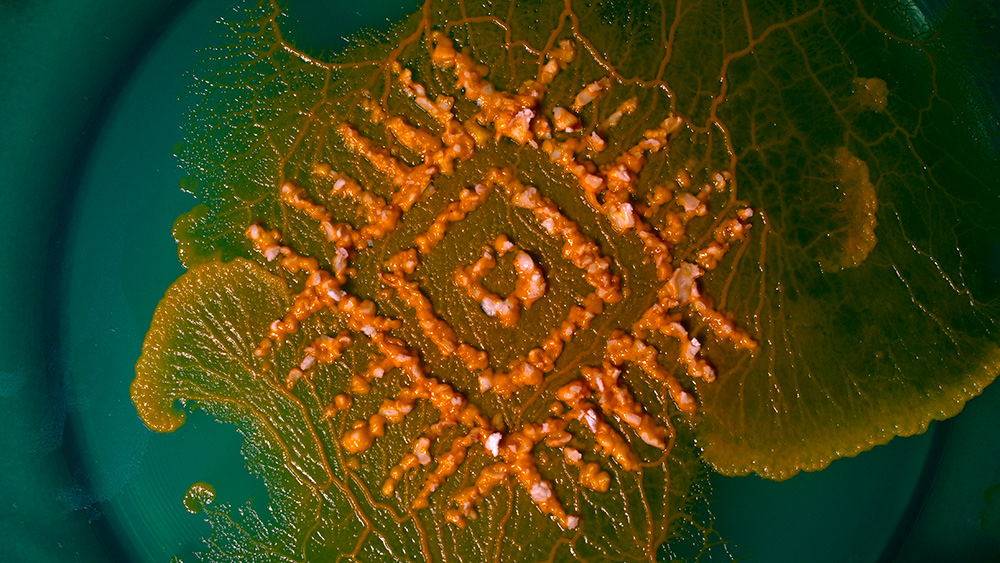THE TIME OF A SLIME MOLD
2021. Digital video. 9 min. 50 sec.
The movement of slime mold is combined with pattern subjects selected from Karelian thread blankets. Slime molds are primitive Amoebae organisms that can move even they do not have a brain or nervous system. The poem heard in the background expresses themes of time, circulation and decomposing.


Slime molds classified as amoebas are macroscopic organisms living on the surface of rotting trees that are able to move even they do not have muscles, brains, or the neurological system. Slime mold are not plants, fungi or animals. Different types of slime molds are different colors and move in different ways and speeds.
In the work, the movement of the slime mold combines with the traditional patterns of Luumäki handwoven blanket. The patterns are from models of Pukki and Pätäri family, made according to old patterns.
The age of these models or patterns cannot be determined, but it is known that these kind of blankets have been woven in Karelia since the early 19th century. Similar patterns also occur in Karelian embroidery patterns. The patterns have different names related to life and living, such as hare's feet, Tree of Life or image of the world. The same type of patterns are used in many different cultures because the patterns are determined in part through the weaving technique.


The Time of a Slime Mold seeks to shift the focus from the world of human experience to another, and to question the individualistic concept of life. We are not as individual as we assume. We are dependent on each other, microbes, amoebas, and animal communities, whether we want it or not. Unnoticed decomposing organisms are an important part of the nutrient cycle and will one day decompose us as well.
Distribution and promotion: AV-Arkki
Poem, script, cinematography, editing, producing: Leena Pukki
Composing and Sound Design: Jenni Venäläinen
Voice over: Ritva Sorvali, Jenni Venäläinen, Leena Pukki
Sound mix: Lauri Kallio
Color and titles: Panu Johansson
Poem translation in english: Maire Saaritsa
Funding: Suomen kulttuurirahasto, Mustarinda

